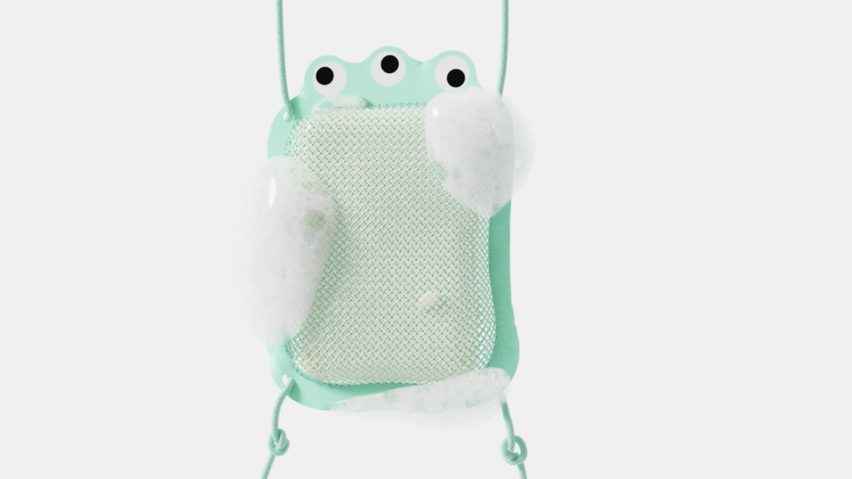
Make-your-own-toilet kit among five standout projects from Design for Good
Designers from ten high-profile companies have joined forces to help improve access to clean water and sanitation as part of the Design for Good consortium. Chief experience officer Fazilat Damani shares five of the most promising.
Design for Good (DfG) was originally launched in 2022 as a non-profit alliance of ten businesses from different industries, including tech companies Microsoft and Philips and London's Royal College of Art.
The alliance also includes food corporations Nestlé and PepsiCo, which have previously been named among the five most plastic-polluting companies in the world.
Working in two-year cycles, designers from each of these companies are donating their time and skills pro bono, collaborating in teams to tackle one of the 17 Sustainable Development Goals (SDGs) set out by the United Nations.
"The sustainability challenges identified by the United Nations are too large to be addressed by any single institution," DfG co-founder Ben Sheppard told Dezeen.
"We are delighted to see many of the world's leading companies, including direct competitors, uniting as part of the DfG alliance in order to have an increased chance of making lasting, sustainable change together."
Need for clean water underlies all other SDGs
DfG's first cohort has already completed the research and prototyping stage for 26 different solutions to address Sustainable Development Goal number six: access to clean water and sanitation.
Now, in the second half of the two-year cycle, the teams are focused on implementing these ideas in collaboration with various development organisations.
According to DfG's chief experience officer Fazilat Damani, the ten founding members voted for water and sanitation as the first SDG to tackle since it is also one of the most fundamental.
"SDG six kind of permeates all the other 16 UN SDGs," she explained. "Take quality education – sanitation and water is important because if you drink unclean water, you get sick and you can't go to school."
"So it goes through all of them," she added. "And there's a lot of breadth in terms of the type of innovations that can come through."
DfG will choose a new SDG to tackle every two years, with education set to be the theme of the next cycle starting in September 2024.
"It's absolutely amazing to see how our designers can shift their thinking from designing in a commercial setting to designing for vulnerable communities," Damani said.
"They're really passionate about human-centred design, wanting to understand how these communities live and how it's different from what they know so that they can innovate something that can genuinely solve a problem."
Below, Damani shares five of the most exciting projects that have come out of the first cohort so far, including a DIY toilet and a gamified handwashing kit for children.
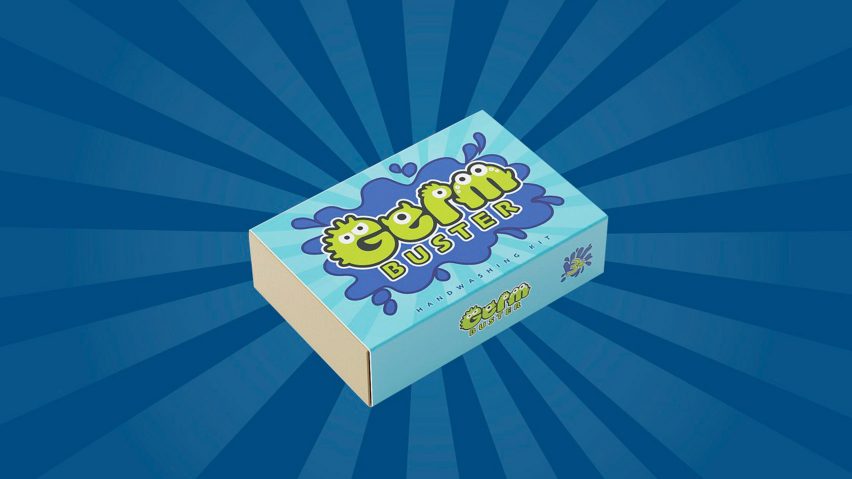
Germ Buster
This portable handwashing kit includes a germ-monster stamp that – much like viruses and bacteria – takes at least 20 seconds to wash off in a bid to teach children about the importance of proper hand hygiene.
The set also includes a monster-themed mesh bag (top image) filled with dry soap sheets, plus a bottle holder that screws onto a PET water bottle and can be hung up so that kids can wash their hands no matter where they are.
The project by designers from technology company Logitech and Grohe's parent company Lixil is a response to research showing that a million deaths could be prevented globally every year if people routinely washed their hands.
"What's neat about this is that it's designed for children and it plays into this playfulness," Damani said.
"They love stickers and things like that. And by having a stamp, they can visually see okay my hands are clean and just have a bit more fun with learning how to be hygienic."
The team is now hoping to work with a consumer packaged goods company to turn the Germ Buster concept into reality.
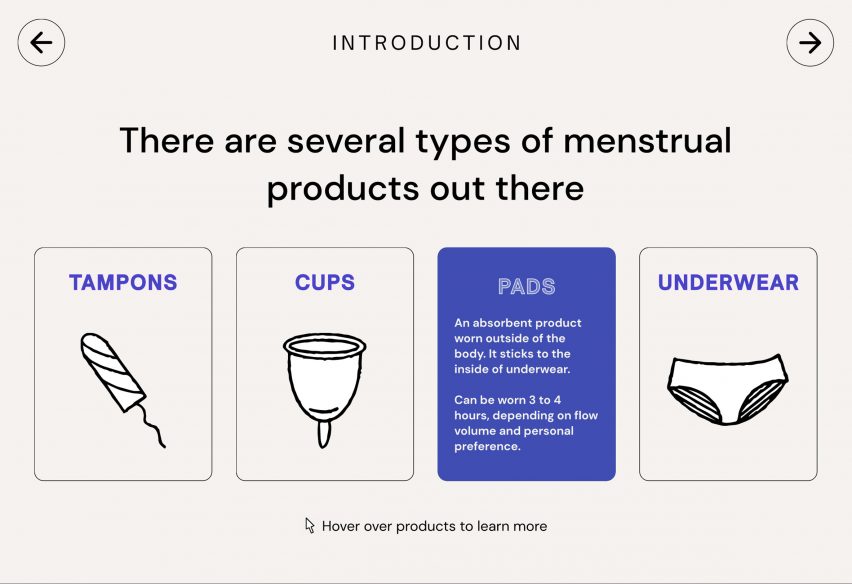
Team 118
Led by designers from Microsoft, Lixil and management consultancy McKinsey & Company, this collaboration with the Liberian Youth Parliament for Water sought to improve access to period products in the West African country of Liberia.
Instead of presenting a one-size-fits-all solution, the team developed a kind of match-making app, which recommends an appropriate product based on the financial resources and sanitation facilities available to people in the local area.
From menstrual cups to reusable pads, the app also shares details about how these period products should be used and cleaned, and how they can be locally sourced or DIYed.
"This is all about self-empowerment and female liberation," Damani said. "To ask for a menstrual product is a bit embarrassing. There's still a stigma around it. So this is about allowing a female to be self-sufficient."
"We take for granted that now we have everything at our disposal," she added. "We have underwear, we have menstrual cups, we have tampons. But in other vulnerable communities, they don't even know half of this stuff exists."
With the app completed, the team is currently working out a distribution model via social media.
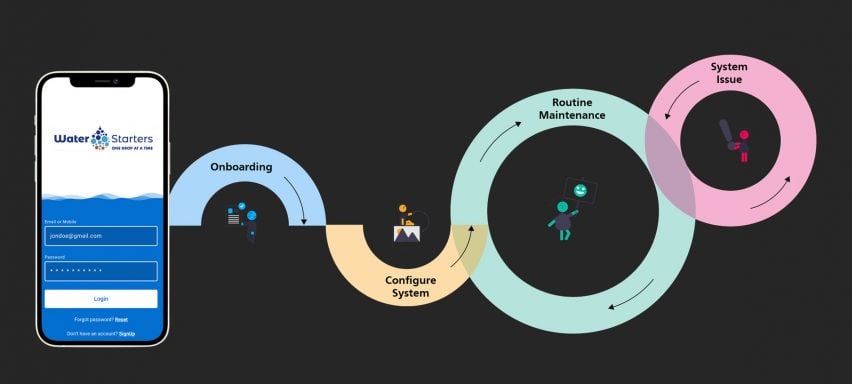
WaterStarters
Regular maintenance is one of the key hurdles standing in the way of a reliable water supply in rural Kenya, with research suggesting that up to 40 per cent of hand pumps in sub-Saharan Africa are broken at any one time.
Social enterprise WaterStarters aims to tackle this issue by using a franchise model to encourage locals to make a business out of establishing and managing a groundwater pump for their community.
To support them through the maintenance process, a team of designers from Philips and McKinsey & Company created an app that prompts users to conduct check-ups and provides guidance on how to fix any issues through tutorials as well as voice and video calls.
"We're not only focusing on maintenance but it provides an income-generating opportunity for an entrepreneur in the vulnerable community," Damani said.
"So they can take ownership of this. They can generate money and they're fully equipped with how to do the maintenance so they're not left on their own. They have a support system in place."
Currently, the platform is being trialled in Kenya's Kajiado County so that feedback can be gathered to build an app store-ready version. Once implemented, the team believes the initiative could help to bring clean water to 63,000 people within two years.
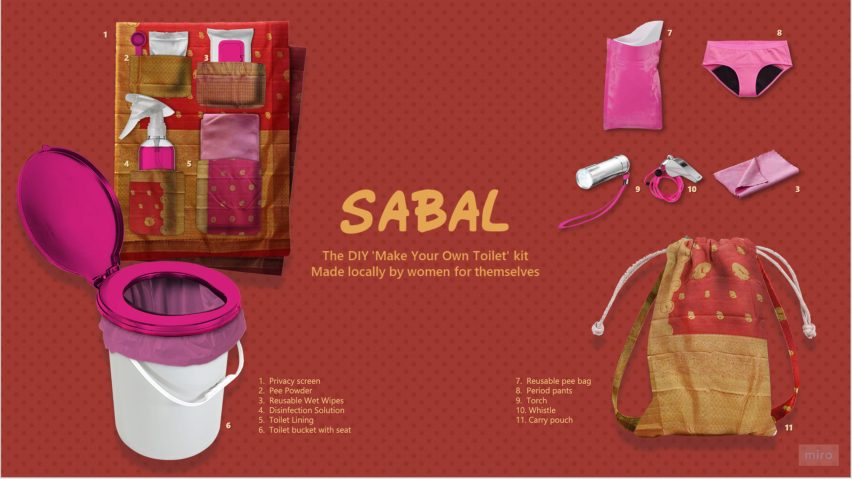
Sabal
Sabal is a make-your-own-toilet kit, designed to offer girls and women living in urban slums across India a safer and more sanitary alternative to shared community restrooms.
Faced with paying fees for unhygienic public toilets and the added risk of violence at night, nearly a quarter of women in these communities frequently hold their pee or refrain from drinking liquids to avoid bathroom use, according to research conducted as part of DfG.
Created by a team of designers from the Royal College of Art (RCA), Philips, Lixil and McKinsey & Company, the Sabal kit allows women to take back their agency by creating a DIY toilet for themselves using readily accessible materials.
The at-home version consists of a bucket topped with a plastic toilet seat and lined with a compostable bin bag, which can be tied up and composted after the urine is solidified using an absorbent powder.
Meanwhile, the portable version is housed in a carrier made of an old sari and contains a Shewee-style portable urinal, a torch, rape whistle and reusable wet wipes.
"It's like a toilet in a purse," Damani said. "You can also build these kits so that you can then sell them and use it as an income-generating opportunity."
"A prototype has been made for this one," she added. "And what we're doing right now is working with development organisations to see who wants to take it forward and really hone in on some of the aspects of culture to make sure we don't offend anyone."
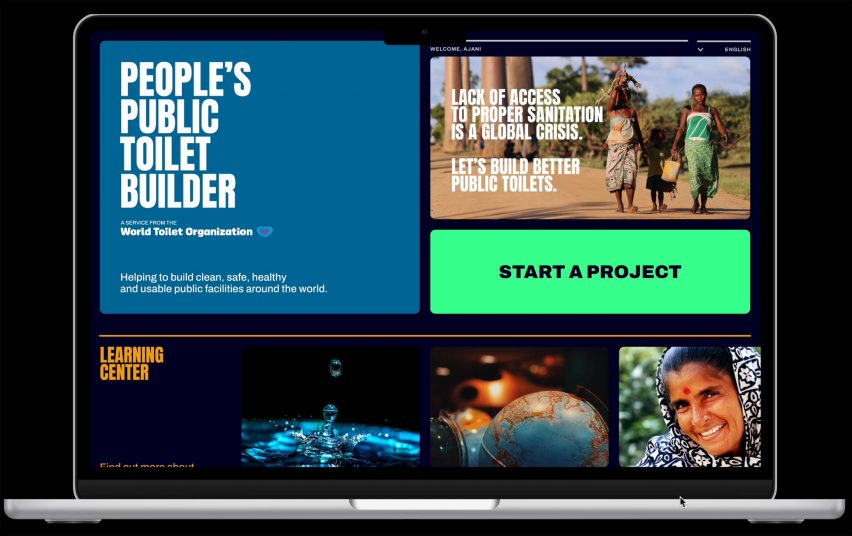
People's Public Toilet Builder
The World Toilet Organisation partnered with designers from the RCA, PepsiCo, Nestle and McKinsey to create the "world's first" centralised guidelines for designing public toilets in different regions across the globe.
The project aims to compile often disparate, incomplete and hard-to-find information into one central online compendium for the first time, to ensure that all communities can have access to safe and hygienic restrooms that are appropriate to the local culture, climate, building codes and affluence level.
"If you're an architect or if you're a community member and you need to build a toilet in a country that's predominantly Muslim, for example, there are certain standards that need to be held up around that," Damani explained.
"So it would be great if you could just put in your context and it spits out everything that you need."
The team has designed a prototype user interface for the platform and is now looking to work with a large language model AI to spot and fill any gaps in the data.
"It's still at a kind of idea phase," Damani added. "We're looking to partner with one of our alliance members or a development organisation that can actually invest the money in this particular expertise to help build out the back end."
All images courtesy of Design for Good.